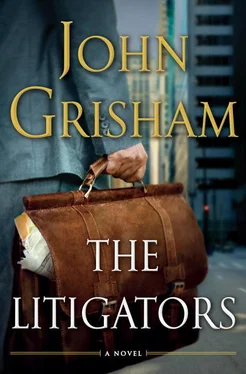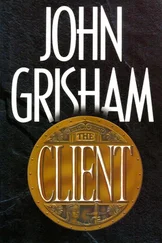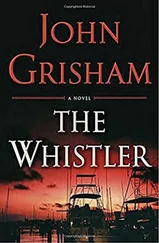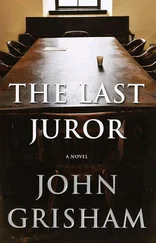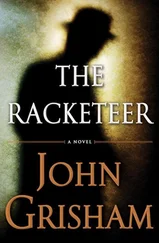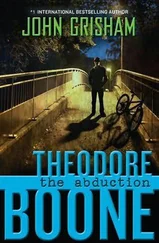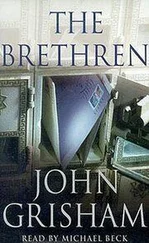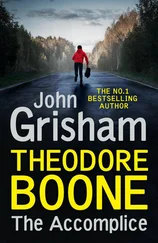After David explained the rule to his partners, the three made the decision not to file Daubert challenges against the experts for Varrick. Their reason was as simple as Nadine’s but on the reverse side. Her experts were so experienced, credentialed, and qualified that a Daubert challenge would be fruitless.
“That’s correct, Your Honor,” she replied.
“That’s correct,” Oscar said.
“Unusual, but then I’m not looking for any extra work.” The judge shuffled some papers and whispered to a clerk. “I see no pending motions, nothing left to do but start the trial. The jurors will be here at 8:30 Monday morning and we will begin promptly at 9:00 a.m. Anything else?”
Nothing from the lawyers.
“Very well. I commend both sides on an efficient discovery process and unusual cooperation. I intend to oversee a fair and speedy trial. Court’s adjourned.”
The Finley & Figg team quickly gathered its files and papers and left the courtroom. On the way out, David tried to imagine what the place would look like in five days, with sixty prospective and nervous jurors, moles from other mass tort law firms on hand for a bloodletting, reporters, stock analysts, jury consultants trying to blend in, smug corporate honchos from Varrick, and the usual courthouse observers. The knot in his stomach made breathing difficult. “Just survive it,” he kept telling himself. “You’re only thirty-two years old. This will not be the end of your career.”
In the hallway, he suggested they split up and spend a few hours watching other trials, but Oscar and Wally just wanted to leave. So David did what he’d been doing for the past two weeks; he eased into a tense courtroom and took a seat three rows behind the lawyers.
The more he watched, the more fascinated he became with the art of a trial.
In the matter of Klopeck v. Varrick Labs , the first crisis was the failure of the plaintiff to show up for court. When informed of this in chambers, Judge Seawright was less than pleased. Wally tried to explain that Iris had been rushed to the hospital in the middle of the night, complaining of shortness of breath, hyperventilation, hives, and one or two other afflictions.
Three hours earlier, as the Finley & Figg lawyers worked frantically around the table in a predawn session, a call came on Wally’s cell. It was Bart Shaw, the malpractice lawyer who was threatening to sue if the Krayoxx cases were mishandled. Apparently, Iris’s son, Clint, had found a lawyer’s phone number and called to say his mother was in the ambulance and headed for the hospital. She would not be able to attend the trial. Clint had called the wrong lawyer, and Shaw was just passing along the news.
“Gee thanks, asshole,” Wally had said as he punched the disconnect.
“When did you first learn that she was taken to the hospital?” Judge Seawright was now asking.
“A few hours ago, Judge. We were at the office preparing, and her lawyer called.”
“Her lawyer? I thought you were her lawyer.”
David and Oscar wanted to slide under the table. Wally’s brain was already fried and he had taken two sedatives. He looked upward at the ceiling and tried to think of a quick way out of this blunder. “Yes, well, you see, Judge, it’s complicated. But she’s at the hospital. I’ll go see her during the lunch break.”
Across the table, Nadine Karros maintained a look of casual concern. She knew everything about Bart Shaw’s bullying of Finley & Figg. In fact, she and her associates had located Shaw and recommended him to Nicholas Walker and Judy Beck.
“You do that, Mr. Figg,” Seawright said sternly. “And I want to see some report from her doctors. I suppose if she’s unable to testify, then we’ll be forced to use her deposition.”
“Yes sir.”
“Jury selection should move right along. I anticipate seating the jury by late this afternoon, so you’re first up in the morning, Mr. Figg. Ideally, the plaintiff begins its case by taking the stand and talking about the dearly departed.”
It was certainly thoughtful of Judge Seawright to tell them how to try their case, Wally thought, but his tone was condescending.
“I’ll talk to her doctors,” Wally said again. “That’s the best I can do.”
“Anything else?”
All the lawyers shook their heads, then left the chambers. They filed into the courtroom, which had filled up nicely in the past fifteen minutes. To the left, behind the plaintiff’s counsel table, a bailiff was herding the sixty jurors into the long, padded benches. To the right, several groups of spectators were milling about, waiting, whispering. Seated near the back, together, were Millie Marino, Adam Grand, and Agnes Schmidt, three of Finley & Figg’s other victims, present out of curiosity and perhaps looking for answers since their guaranteed $1 million jackpots had suddenly vanished. They were with Bart Shaw, the vulture, the pariah, the lowest scum to be found in the legal profession. Two rows in front of them sat Goodloe Stamm, the divorce lawyer hired by Paula Finley. Stamm had already heard the gossip and knew the serious trial lawyers had jumped ship. Still, he was curious about the case and even hopeful Finley & Figg could pull off a miracle and generate some money for his client.
Judge Seawright called things to order and thanked the jurors for their patriotic duty. He gave a thirty-word summary of the case, then introduced the lawyers and the courtroom personnel who would take part in the trial — the court reporter, the bailiffs, the clerks. He explained the absence of Iris Klopeck and introduced Nicholas Walker, the corporate representative for Varrick Laboratories.
After thirty years on the bench, Harry Seawright knew a thing or two about selecting juries. The most important element, at least in his opinion, was to keep the lawyers as quiet as possible. He had his own list of questions, one tweaked over the years, and allowed the lawyers to submit inquiries to him. But he did the bulk of the talking.
The extensive screening questionnaire streamlined the process. It had already eliminated jurors who were over sixty-five, blind, or suffering from a disability that would affect their service, and those who had served in the past twelve months. It had flagged those who claimed to know something about the case, or the lawyers, or the drug. As the judge went through his questions, an airline pilot stood and asked to be excused because of his schedule. This prompted a surprisingly harsh lecture from Judge Seawright about civic duty. When the pilot sat down, adequately scorched, no one else dared to claim they were too busy to serve. A young mother with a Down’s child was excused.
In the previous two weeks, David had talked to at least a dozen lawyers who had tried cases before Seawright. Every judge has his quirks, especially federal ones because they are appointed for life and their actions are seldom questioned. Every lawyer had told David to just lie low during jury selection. “The old man will do a thorough job for you,” they said, over and over.
When the pool was down to fifty, Judge Seawright picked twelve names at random. They were directed by a bailiff to the jury box, where they filled the comfortable chairs. Every lawyer was scribbling away. The jury consultants were on the edges of their seats, practically gawking at the first twelve.
The great debate had been, what’s the model juror for this case? On the plaintiff’s side, the lawyers preferred heavy people with habits as slovenly as the Klopecks’, preferably folks battling high cholesterol and other lifestyle-inflicted health problems. Across the aisle, the defense lawyers preferred lean, hard, youthful bodies with little patience and sympathy for the obese and afflicted. In the first batch, there was the inevitable mix, though only a couple appeared to spend much time in the gym. Judge Seawright zeroed in on Number 35 because she had admitted reading several articles about the drug. However, it became clear that she was open-minded and could be fair. Number 29’s father was a doctor, and she grew up in a house where “lawsuit” was a dirty word. Number 16 had once filed a lawsuit over a bad roofing job, and this was discussed to the point of forcing yawns. But the judge plowed ahead with his endless questions. When he finished, he invited the plaintiff to quiz the prospective jurors, but only on topics that had not been covered.
Читать дальше
